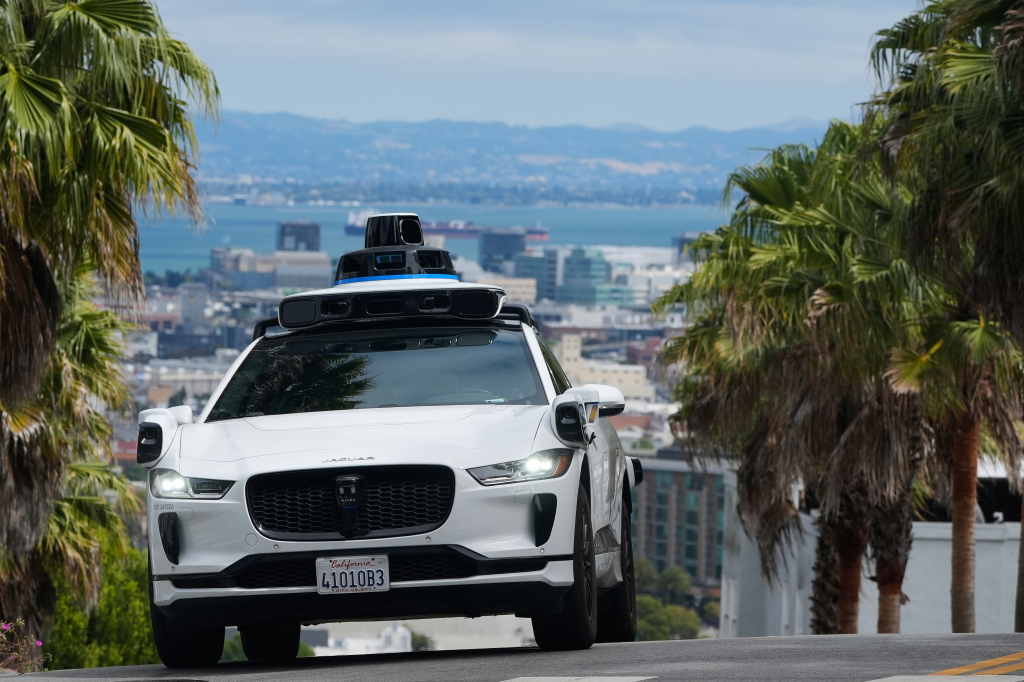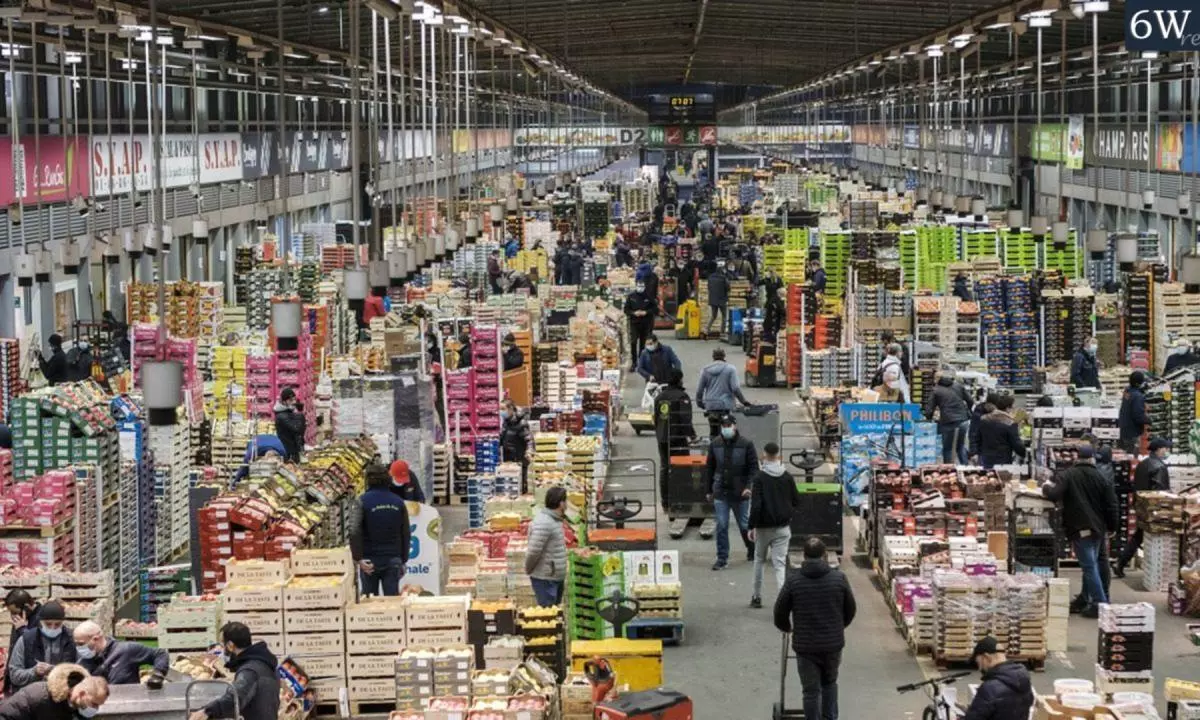Copyright The Denver Post

Big Tech’s self-driving vehicles — a fleet of white Jaguars and powder-blue Zeekrs topped with rotating black cameras and radar — have been rolling around Denver for two months, ingesting data into their artificial-intelligence computers ahead of public activation next year. The Waymo expansion here, part of a push into as many as a dozen cities, for which the California-based company secured $5.6 billion from investors, accelerates the spread of machine-learning technology and may help robotaxis overcome a technical problem: navigating thick, sensor-obscuring snow. But no government agency in Colorado provides independent regulatory oversight, despite hundreds of collisions in other cities. State lawmakers in 2017 gave tech companies the green light to deploy autonomous vehicles, as long as they obey traffic rules — looser than the regulatory requirements in Arizona and California, the first states where Waymo launched self-driving vehicles. Colorado lawmakers also blocked local governments from banning autonomous vehicles. Behind the scenes, ethicists and engineers are questioning what they see as a precedent for whether humans keep control. “I want to see autonomous vehicles be used to help people be more liberated,” Colorado School of Mines robotics engineer Frankie Zhu said last month in a lab where she’s honing vehicle navigation systems for NASA. “I agree with the humans who feel they’re being left behind. It’s a governmental and societal problem.” State leaders have embraced the rollout in Denver, which will push the number of Waymo driverless taxis in U.S. cities to more than 2,000. Waymo officials say their fleet of a dozen vehicles collecting data in Denver — still with human handlers riding along — will “grow with the number of riders” when paid service begins late next year. “We welcome Waymo to Colorado,” Gov. Jared Polis said in an emailed response to questions from The Denver Post. This deployment jibes with state priorities “to help Coloradans get where we want to go faster, safer, with transportation options,” Polis said. “We’re excited that companies are looking to bring promising new technologies like autonomous driving to Colorado that, done right, will improve safety on our streets. Our state is driven by innovation, and the arrival of Waymo’s autonomous vehicle technology in Denver is a step forward.”. Polis has delayed implementation of a state AI policy, calling for a sharper focus on high-risk systems that make “consequential decisions,” and said any policy to protect people against AI discriminatory bias also must support innovation. He recently vetoed a bill that would have banned driverless trucks. ‘You feel trust’ Waymo first deployed its robotaxis, which can be summoned through smartphone apps, in 2020, starting in Phoenix, San Francisco and Los Angeles, then Atlanta and Austin, Texas. The company now provides more than 1 million paid rides a month. Beyond Denver, company officials said the expansion in 2026 will include Dallas, Miami, Las Vegas, Washington, D.C., and Nashville, Tennessee, and that they are preparing to launch in Seattle, Detroit, Philadelphia and San Diego — as well as London and Tokyo. A Waymo algorithm based on data drawn from navigating 100 million miles of city streets makes determinations and directly operates the vehicles’ steering, acceleration and braking. Waymo officials say their electric-powered, self-driving cars are much safer than vehicles driven by humans prone to road rage, intoxication and distraction as they look at phones. Waymo’s artificial intelligence system evolves on its own as the rotating sensors extract more and more information. “You feel trust when you see it. It is being driven by Waymo’s technology,” company spokeswoman Sandy Karp said. The rollout across metro Denver has been stealthy. Denver transportation officials said they didn’t know the location of Waymo’s depot for charging and storage. (Waymo is using “temporary facilities downtown” before opening “a larger, permanent depot to support our scaled-up operations,” according to the company.) City and state authorities also were unable to address data privacy — whether the vehicles will gather and share information about riders — as well as whether Waymo surveillance will be tapped for law enforcement use, whether robot-run taxis will have special licenses distinguishing them from vehicles driven by humans, and whether company cybersecurity protocols are sufficient to ensure public safety. Following a Sept. 16 private reception downtown for journalists and “special guests,” Waymo officials told The Post they could not accommodate interviews and only responded to written questions. The rollout in Denver began after Waymo, a subsidiary of Alphabet Inc., the parent company of Google, expressed interest. Waymo officials recognize Denver as one of the nation’s top ride-hailing markets and appreciate “Colorado’s welcoming regulatory environment,” a company statement said. Waymo wants to operate in New York, too, “but first needs state laws to change,” the statement said. Denver officials “are excited to welcome Waymo” to be part of a future mobility system that manages traffic congestion, said Amy Ford, director of the Denver Department of Transportation and Infrastructure. Mayor Mike Johnston’s goals envision transit that is environmentally friendly, affordable and shared — to reduce the number of single-occupant vehicles that cause traffic jams, she said. Ford served previously on a three-member state task force that reviewed applications for testing driverless vehicles that weren’t yet able to comply with state traffic laws. She recalled how, in 2021, task force members supported the French company EasyMile’s launch of one of the nation’s first electric, self-driving shuttle systems in Golden around the Colorado School of Mines. The technology at the time was “shocking and surprising,” showing huge potential, she said, recalling a test run from Loveland to Colorado Springs. Over the past four years, Waymo and other companies demonstrated “a continuum of automation” toward deployment of systems that are “ever-watchful and safe,” she said. “The machine-learning capacity of some of these systems has only grown.” The self-driving shuttles in Golden flopped. Colorado School of Mines students dubbed the high-profile 10-passenger vehicles “toasters,” said former city manager Jason Slowinski, who now serves as the university’s vice president for infrastructure and operations. “We ended it” in 2022 after less than a year because the vehicles “didn’t flow very well in traffic,” seldom exceeding 10 mph, creating hazards. Frustrated riders found they could reach their destinations faster by walking, Slowinski said. EasyMile shuttles stalled at roundabouts, lacked the power to carry riders up hills, and caused multiple collisions, he said. More experimentation will be necessary before handing over transport to robots, Slowinski said. “It’s something we’re all struggling with,” he said. “How do we best position AI to help us? At this point, trust but verify — until we have a sense of what this technology is doing and how it is functioning.” Lawmakers limit local control Under Colorado law, cities and towns cannot prohibit autonomous vehicles or pass regulations that treat them differently from human-driven vehicles. That law gives “blanket approval” for deploying driverless vehicles statewide, and it practically prevents action by local governments to protect communities, said Kevin Bommer, director of the Colorado Municipal League, who advocates for cities and towns. Bommer said independent state-level oversight, at least, is crucial “for something this highly technologically dependent.” “If someone cannot go to City Hall and ask regulators a question, who at the state can they go to?” he said. “…If one of my members came to me and said, ‘Who can I talk to at the state?’ I wouldn’t know where to send them. Who is in charge? It seems like there’s still some work to do. Maybe it ought to get done before these self-driving vehicles go live. “It sure seems that someone at the state should know what’s going to happen before these vehicles are driving around. What if there’s an accident? What if somebody thinks their identity has been compromised or shared inappropriately? Who do people seek relief from?” A review of Denver County Court records found no Waymo speeding or traffic obstruction violations over the past two months of testing. Denver police weren’t available to discuss how they’d deal with a driverless vehicle. Colorado Department of Revenue officials didn’t respond to questions about licensing. In California, the state Division of Motor Vehicles has kept records of autonomous vehicle collisions since 2019, reporting at least 888. A robotaxi in San Francisco, where Waymo has deployed more than 800 vehicles, last month hit and killed a beloved neighborhood cat. Colorado Department of Transportation Director Shoshana Lew defended the state’s lack of regulatory oversight as appropriate until self-driving vehicles are established. “They’re operating in a fairly controlled environment,” Lew said in an interview, acknowledging that the informal task force run by CDOT and the Colorado State Patrol plays only an advisory role. (CDOT’s chief of innovative mobility Kay Kelly, in a recent briefing for state lawmakers, said the task force has identified data privacy, sensor limitations, cybersecurity and regulatory issues as challenges that Waymo is handling. Kelly wasn’t available for an interview.) The federal government “probably” will address privacy concerns and data-sharing in the future, and self-driving vehicles will fall within the purview of the National Highway Safety Administration, Lew said. In Colorado, “ultimately, the Public Utilities Commission and other agencies will work together” to provide oversight, she said. Machine-learning ‘pervading our lives’ Meanwhile, engineers and ethicists are mulling the implications of replacing human decision-making with progressive machine-learning technology. “There hasn’t been any public debate in our cities about this,” said University of Colorado Boulder civil engineer Amir Behzadan, who serves as a fellow for CU’s Institute of Behavioral Science, researching applications of artificial intelligence. “Who is responsible if something goes wrong?” For riders in a Waymo vehicle, the automated system “does not commit to any moral, social or ethical outcome,” Behzadan said. “When you’re on an exercise treadmill and you feel unsafe, there’s this rope you can pull to shut off the system. I assume, if you’re using any tool or technology that can put your life at risk, there must be a way to opt out. I would advocate having a kill button in those vehicles,” he said. Waymo ridership will depend on trust, which requires openness and transparency, Behzadan contends. “When we talk with the salespeople, typically, they’re very much inclined to talk about the positive aspects of their technology,” he said. “A good question to ask is: Can you give me cases of where we cannot rely on the technology?” At CU Denver, philosophy professor David Hildebrand has launched a course on artificial intelligence and ethics. The rollout of Waymo’s autonomous vehicles in Denver offers a case study for students who may face a future where human decision-making is replaced by computers. Among his questions: “Do AVs disproportionately endanger pedestrians, cyclists and children, especially in underserved neighborhoods, even while improving overall safety?” and, “Who has the authority to decide the pre-programmed ethical framework AVs use in unavoidable collision scenarios — manufacturers, local officials, or elected representatives?” Government employees tasked with oversight in the future may lack the necessary expertise, Hildebrand said. “Even if officials have access to AV systems and programming, there’s a ‘black box’ nature of machine-learning models, which may mean that AV ‘decisions’ cannot be fully explicable in human-interpretable terms,” he said. “Our usual need is to chase down the cause of a problem. But the very design here may make this technically impossible.” Driverless transportation in cities already is proving safer than human-driven vehicles, but this is “one of the highest risk machine-learning applications” and “any point of system failure can be catastrophic,” said robotics engineer Zhu in her lab at the Colorado School of Mines. She and her team loaded 132 tons of white dust, nearly as fine as flour, into a 30-square-foot “lunar surface simulator” for testing autonomous vehicles. They create dust storms and observe how machine-learning sensors respond — the challenge Waymo faces this winter in Denver during snowstorms. Waymo officials say they’re developing tiny wipers and heaters to keep sensors clear for navigating fog, dust storms and blizzards. When dust obscures sensors on a self-driving lunar rover, the vehicle abruptly “hits the brakes,” stopping to avoid a collision. “There can be spontaneous events that confuse the vehicle. Was that a child? Or was that a snowflake? If your sensing is degraded, your ability to make out information about your environment is degraded. Then there are cascading impacts that affect the rest of your autonomous system,” Zhu said. “It’s very hard to ignore machine learning these days. It is pervading our lives.”



